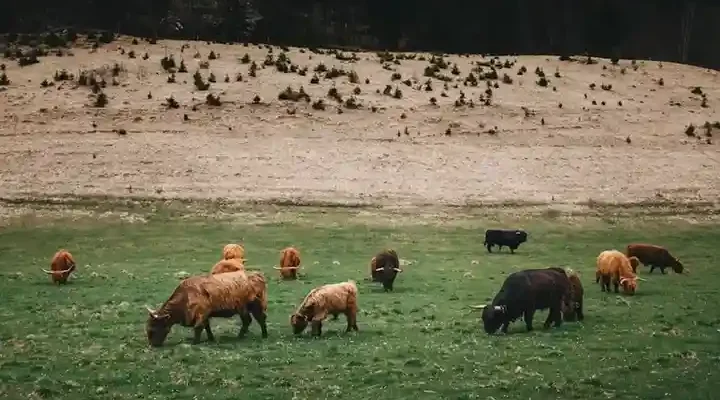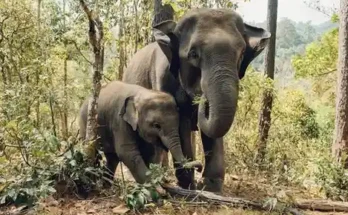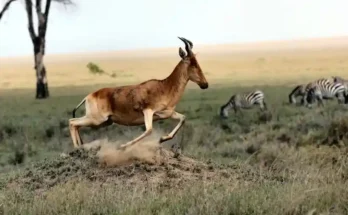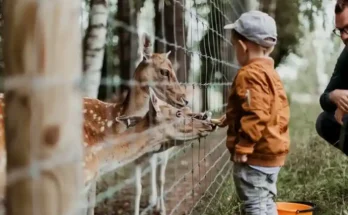The animal kingdom is a dazzling kaleidoscope of life that fills our skies, seas, forests, and homes. From the tiniest ant to the colossal blue whale, animals are the lifeblood of ecosystems, shaping the natural world in extraordinary ways. Every creature has a story, a purpose, and a place in the intricate web of life. This article takes you on a journey through the vast universe of animals, explaining their types, behaviors, and the incredible diversity that makes them one of Earth’s greatest treasures.
The Definition of Animals:
Animals, scientifically known as members of the kingdom Animalia, are multicellular organisms that consume organic material, breathe oxygen, can move, and reproduce sexually (though some exceptions exist). They differ from plants and fungi due to their ability to move freely and respond rapidly to their environment, thanks to their complex nervous systems.
But animals are not just living organisms; they are companions, predators, pollinators, and prey. Their existence is deeply intertwined with ours, and their presence influences everything from ecological balance to human culture.
Humans and Animals:
From the dawn of civilization, animals have lived alongside humans. They’ve served as laborers, protectors, companions, and food sources. They’ve inspired stories, religions, art, and inventions.
But this relationship isn’t without complexity. Habitat destruction, pollution, climate change, and poaching have pushed thousands of species to the brink. As caretakers of this planet, it’s our responsibility to protect and preserve the biodiversity that keeps Earth alive and beautiful.
Types of Animals:
Animals can be broadly categorized in several ways—by habitat, biology, or body structure—but the most accepted scientific classification divides them into vertebrates and invertebrates, with many subtypes under each.
Vertebrates:
Vertebrates are animals that have a backbone or spinal column. Despite making up only a small percentage of all animal species, they are often the most recognized.
-
Mammals
Mammals are warm-blooded vertebrates with hair or fur, and most give birth to live young. They nurse their young with milk produced by mammary glands. Humans, elephants, whales, and bats are all examples of mammals.
Mammals are unique in their complex brain structures, social behavior, and parental care. From the deep-diving sperm whale to the gliding sugar glider, their adaptability is astounding.
-
Birds
Birds are warm-blooded, egg-laying creatures with feathers, wings, and beaks. Most birds can fly, though some like ostriches and penguins have adapted to different forms of movement.
Their feathers serve many purposes—flight, temperature control, and even courtship displays. Birds play key roles in pollination and seed dispersal, and their songs often bring life to the natural world.
-
Reptiles
Reptiles are cold-blooded animals with scaly skin, laying soft-shelled eggs on land. Snakes, lizards, crocodiles, and turtles all fall into this group.
They are ancient creatures, having walked the Earth for over 300 million years. Their tough exteriors help them survive in harsh climates, from arid deserts to dense rainforests.
-
Amphibians
Amphibians begin life in water and usually undergo metamorphosis to become land-dwelling adults. Frogs, toads, salamanders, and newts are classic examples.
Amphibians are highly sensitive to environmental changes, making them important bioindicators. Their dual life, both aquatic and terrestrial, is a testament to evolutionary brilliance.
-
Fish
Fish are aquatic, gill-bearing animals that lack limbs with digits. They are the oldest vertebrate group and come in three major classes: jawless, cartilaginous (like sharks), and bony fish (like salmon).
Their world is one of current, camouflage, and complex communication. Many fish display bright colors or unusual shapes, and their survival tactics range from electric shocks to inflating their bodies like balloons.
Invertebrates:
Invertebrates make up around 97% of all animal species. They may be small or microscopic, but they dominate ecosystems in sheer number and variety.
-
Arthropods
This is the largest phylum in the animal kingdom, including insects, arachnids (spiders and scorpions), crustaceans (crabs and lobsters), and centipedes.
They have jointed limbs, segmented bodies, and exoskeletons. Insects like bees and butterflies pollinate plants, while ants engineer entire landscapes beneath our feet.
-
Mollusks
Mollusks include soft-bodied animals such as octopuses, squids, clams, snails, and oysters. Some have hard shells for protection; others, like the octopus, rely on intelligence and camouflage.
They are often considered some of the most intelligent invertebrates, particularly cephalopods, which can solve puzzles and use tools.
-
Annelids
These are segmented worms like earthworms and leeches. Though less glamorous, they play essential roles in breaking down soil and decomposing organic material.
Their underground labor keeps ecosystems healthy, aerating the soil and recycling nutrients in ways that benefit both plants and animals.
-
Cnidarians
This group includes jellyfish, sea anemones, and corals. They are aquatic animals characterized by stinging cells used for capturing prey.
While they might seem simple, coral reefs—formed by tiny cnidarians—are some of the richest ecosystems on Earth, hosting thousands of marine species.
-
Echinoderms
These marine animals, such as starfish, sea urchins, and sea cucumbers, have a unique five-part radial symmetry.
They are capable of astonishing feats, such as regenerating lost limbs. Despite their slow movement, they’re essential players in marine ecosystems.
The Role of Animals in Ecosystems:
Animals are not isolated entities; they are participants in complex ecological systems. Herbivores help in controlling plant populations, predators maintain balance by culling the weak, and decomposers recycle life by breaking down the dead. Bees and butterflies ensure that flowers bloom year after year, while wolves in Yellowstone shaped the flow of rivers simply by altering the behavior of deer.
Every animal has a role, even those we consider pests. Rats help scientists understand medicine; flies clean up waste; and even parasites influence food webs in subtle ways.
Conservation and Hope for the Future:
Across the globe, efforts are being made to protect endangered species and restore habitats. National parks, wildlife sanctuaries, breeding programs, and eco-initiatives are turning the tide for many species.
Education and awareness play a critical role. Understanding animals—not just their appearance, but their needs and roles—leads to empathy and action. When we protect animals, we protect ourselves and the future of our shared planet.
Conclusion:
Animals are more than just biological entities; they are threads in the grand tapestry of life. They leap, crawl, swim, fly, and slither across every corner of our world. Whether it’s the loyalty of a dog, the grace of a deer, or the mystery of a jellyfish, animals remind us that life is astonishingly diverse and endlessly fascinating.
To know animals is to marvel at the miracle of nature—and to preserve them is to celebrate life itself.




